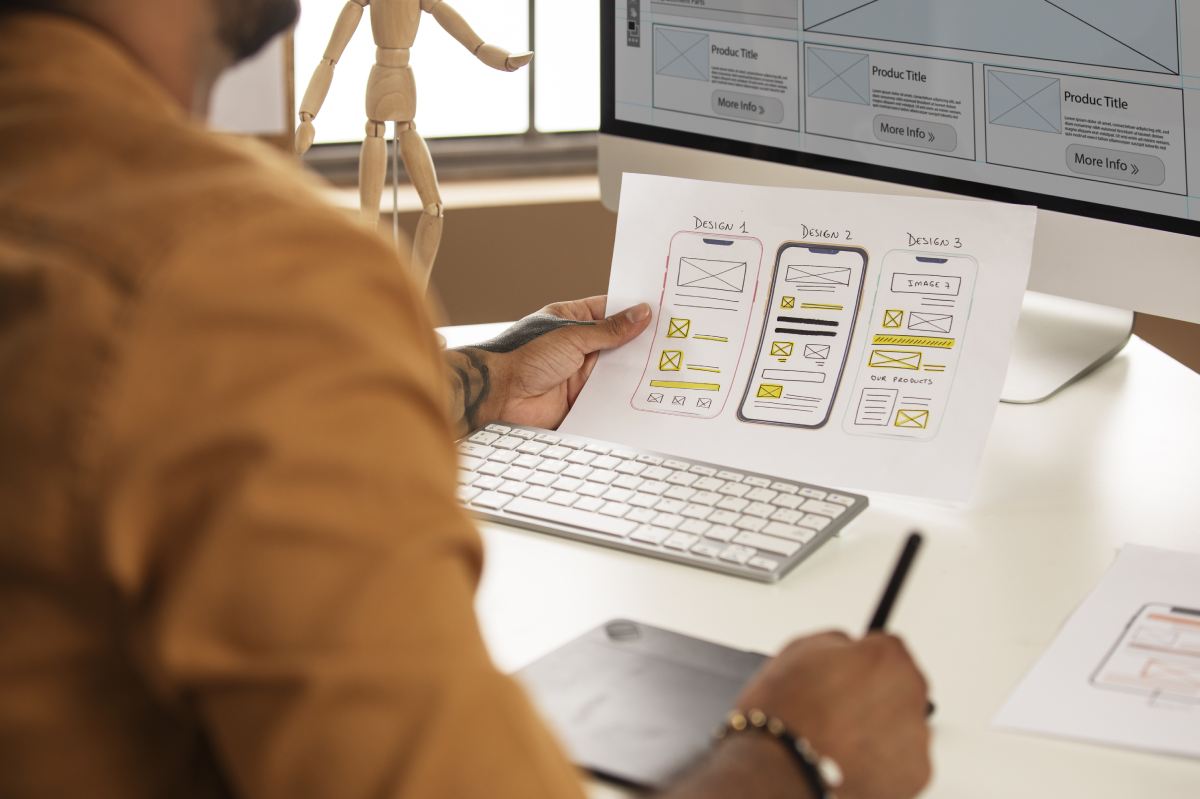A good interface enables pleasant usability for the visitors of your website. But not only! This article explains what other advantages a good user interface has and what rules a user interface designer uses to simplify the conception of your interface.
Table of Contents
User Interface (UI) – Essential Interface Between Man And Machine
The UI design is part of the visual design of a website. This is where the interactions with the users are designed: The user interface (UI) is the interface between people and software or hardware.
It has a direct impact on how well your website visitors can interact with your website and whether they can easily get to the information they are looking for, for example.
A Good Graphical User Interface Has The Following Advantages:
The main goal is to make the use of the website as easy and positive as possible, thereby accompanying website visitors as best as possible on their customer journey. Are important:
Accessibility
A website that is designed to be barrier-free can be used easily by everyone, in all situations. Because: The fewer barriers your interface has, the more users can use your website.
Responsives Design
Thanks to a responsive UI, your website can be used on all selected end devices without any problems. Thus, more end devices also mean greater access for potential customers and the expansion of your target group.
Virtual Assistants
A modern UI design works with virtual assistants. They take on a variety of tasks. Be it answering customer questions, writing e-mails, managing appointments or filtering elements.
If your website is logically structured, easy to use, practical and clear, your company will also be perceived positively. This creates trust and contributes to a positive image – and ideally to winning customers. In order to develop an intuitive user interface, UI designers work according to certain rules.
Also Read: Design And Improvement Of Employer Branding
7 Rules Of User Interface Design With Practical Examples
1 Do Not Overwhelm The Website Visitor:
Less is more. The more elements there are on your website, the more difficult it is for the user to remember all the features.
Therefore, reduce the use of different colors and shapes to the bare essentials.
2 Continuity Makes Usability Easier:
Colors, shapes and functionality of elements on your website should not constantly change.
Once an element is established on your website, your website visitor will remember its colors and shapes and their function.
3 Avoid Barriers:
A good user interface must be accessible to all users.
Not only bad or missing eyesight can be a barrier for your website. People with motor disabilities, hearing impairments, color blindness or concentration problems also find it difficult to navigate your website if certain characteristics are not met.
The most important properties include
- High color contrasts,
- Clearly recognizable CTAs and links,
- Good readability of texts,
- Customizable languages,
- Captions and
- A clear structure.
Accessibility is still a very complex topic. However, every barrier removed from your site gives new users a chance to interact with your site.
4 Action Follows Reaction:
Each input must be followed by a response.
Feedback, whether positive or negative, is important. Your website visitor needs to know if their input is working. Without appropriate feedback, he assumes that your website is not working or has errors.
5 Note The Visual Hierarchy:
Hierarchies determine how important individual elements are on your website.
Contrast, scaling and positioning play a major role here. In the first level of the structure, only core information is shown. The second level contains information that your user can quickly scan through. The last level includes all other elements that provide additional information.
Level 1: The aim is to attract the attention of a potential new user.
Level 2: The aim is to navigate the user through the website and convey content.
Level 3: The aim is to offer additional information.
6 Give Control To The User:
Your website visitor wants to make their own decisions.
Always offer multiple options. He will decide for himself which options are most suitable for him and which are not. Forcing your user leads to a negative experience for him.
7 Good User Interface Design Is Invisible:
The better the interface, the less your user will notice it.
The user interface guides your user through your website without them noticing anything. Intuition and experience support him in this. If he is pulled out of this flow, it will lead to confusion and irritation.
Also Read: How Companies Are Using VR And AR
Conclusion
A successful UI design improves the website and the image of your company and adapts to the end devices you have selected. In addition, an intuitive UI design accompanies your website visitors along the customer journey and helps you to generate new customers!
The most important rules of UI design include:
- Avoid overload,
- Continuity facilitates usability,
- Avoid barriers,
- Actions are followed by reactions
- Observe hierarchies,
- Mediate control as well
- The invisibility of good design.




